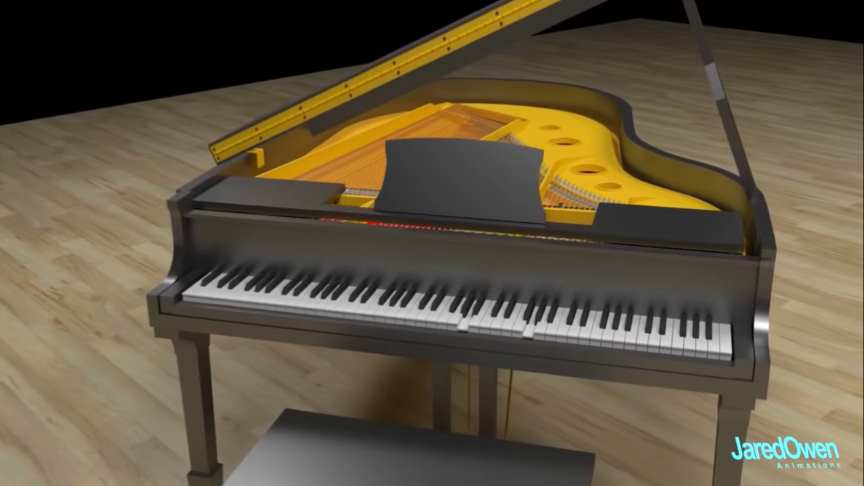This video covers the different parts of a Grand Piano and what happens when a key is pressed.For those interested – the keys being played on the piano are the real keys for the song or at least close to it.The piano is an acoustic, stringed musical instrument invented in Italy by Bartolomeo Cristofori around the year 1700.
source/image(PrtSc): Jared Owen
In which the strings are struck by wooden hammers that are coated with a softer material modern hammers are covered with dense wool felt some early pianos used leather). It is played using a keyboard, which is a row of keys (small levers) that the performer presses down or strikes with the fingers and thumbs of both hands to cause the hammers to strike the strings.
A piano usually has a protective wooden case surrounding the soundboard and metal strings, which are strung under great tension on a heavy metal frame. Pressing one or more keys on the piano’s keyboard causes a wooden or plastic hammer (typically padded with firm felt) to strike the strings.
Advertisement
The hammer rebounds from the strings, and the strings continue to vibrate at their resonant frequency.These vibrations are transmitted through a bridge to a soundboard that amplifies by more efficiently coupling the acoustic energy to the air.
This part covers the three foot pedals and how they change the sound of the grand piano. We’ll build off of part 1 and show you how the mechanism works inside the piano. Keep in mind that this video only covers the grand piano – the upright piano works differently.











